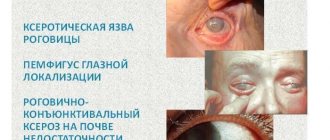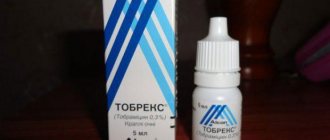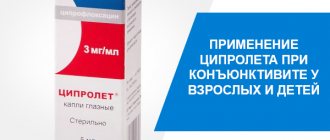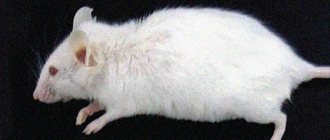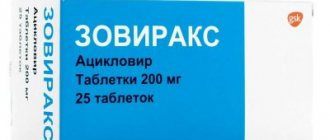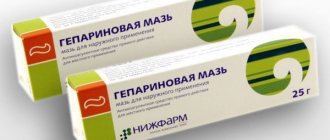Oftan Katahrom eye drops are widely used in the treatment of diseases such as cataracts. This disease can affect people at any age, but it is most often diagnosed in older patients. Cataracts can be treated with surgery and medication. If the second method is chosen, then doctors prescribe drugs in the form of drops, one of which may be Oftan Katahrom.
Compound
The medicine Oftan Katahrom has a unique composition. It contains active components that have a positive effect on the eyes. This should include:
- Cytochrome C. Its concentration in 1 ml of the product is 0.675 mg. The component is an antioxidant and plays a major role in the biochemical redox process occurring in the eyeball. Cytochrome C is completely absorbed by the body, and its excretion occurs in bile, while the component does not enter the general bloodstream.
- Sodium succinate. In 1 ml of solution it is contained in a concentration of 1 mg. This component has a tonic effect, soothes tired and irritated eyesight.
- Adenosine. In 1 ml of solution it contains 2 mg. This component is important for metabolic processes and restoration of the lens. It has a restorative effect and stimulates blood circulation. Adenosine is readily absorbed through the cornea and is converted in all tissues to form inosine, urate and xanthite. Excreted from the body with urine.
- Nicotinamide. In 1 ml of solution it contains 20 mg. Has a restorative effect. After it enters the body, it is partially converted into nicotinic acid. It is then converted to N-methylnicotinamide. It is broken down in the liver. The remainder of the nicotinamide is excreted from the body in the urine.
This is not the entire list of components contained in eye drops. There are also additional components:
- benzalkonium chloride;
- sorbitol;
- sodium hydrogen phosphate dihydrate;
- sodium dihydrogen phosphate dihydrate;
- sodium succinate hexahydrate;
- water.
Form, composition and mechanism of action
The drops are transparent and red. The constituent components have an antioxidant and nutritional effect - the treatment of cataracts is based on these effects in order to stop it. A positive effect was also found in nonspecific non-infectious inflammatory diseases of the eye.
Let's consider the composition and action of the drops:
Cytochrome C
This is an antioxidant whose purpose is to suppress oxidative processes in the tissues of the anterior part of the eye by neutralizing acid radicals.
Cytochrome C is a small heme-containing protein, an enzyme that is an important component of the cell respiratory chain. It contains iron, which can reversibly transform from oxidized to reduced form, but the protein does not bind oxygen. Getting directly onto the cornea, the element is broken down into heme peptide and exhibits its antioxidant effect, blocking the formation of radicals.
With cataracts, the lens thickens, becomes cloudy, and the person loses clarity of vision
Adenosine
The substance is a nucleoside with a lot of positive properties:
Eye drops to improve vision
- dilates blood vessels and improves blood supply to the eye;
- improves the exchange of intraocular fluid, helping to remove waste toxic catabolites;
- nourishes the lens and cornea;
- slows down inflammatory processes of the conjunctiva, cornea and other parts, stimulating A-receptors;
- reduces the release of inflammatory mediators (for example, calcitonin gene-related peptide).
Adenosine is an important basic element in DNA repair and normalization of metabolism in the lens. It is a precursor to ATP (adenosine triphosphate). The substance penetrates freely through the cornea.
Nicotinamide
A building block of the coenzymes NAD (nicotinamide adenine dinucleotide) and NADP (nicotinamide adenine dinucleotide phosphate), they are vital. This substance is added to the drops because it is believed that the development of cataracts can be stopped by increasing the ability of epithelial eye cells to recover with just the necessary nutrients.
The substance partially breaks down to nicotinic acid, and then to N-methylnicotinamide, further breakdown occurs in the liver, metabolites and the remaining unprocessed nicotinamide are excreted in the urine.
Instructions for use
Along with the medicine in a cardboard package there are instructions for use. It outlines the features of using the drug. Drops are prescribed for the treatment of various types of cataracts. Place 1-2 drops into the conjunctival sac. Carry out such events 1-2 times a day. But the exact dosage can only be determined by the attending physician. You should not use the medicine yourself, as this is fraught with the development of side effects.
Side effects
When using the drug Oftan Katahrom, various side effects may occur. When instilled, the patient may feel a slight and short-lived burning sensation, itching, and pain. In addition, such treatment can lead to the development of eyelid skin dermatitis or conjunctivitis.
The following symptoms occur very often:
- nausea,
- dizziness,
- arterial hypotension,
- shortness of breath,
- sweating and a pounding sensation in the temples,
- fainting.
The reason for the development of side symptoms is the influence of nicotinic acid, which boils down to providing a vasoconstrictor effect.
About effectiveness and safety
It has been proven that Oftan Katahrom, in addition to its antioxidant effect, has a number of advantages:
- relieves non-infectious inflammation;
- has a disinfectant and antibacterial effect;
- nourishes and moisturizes the surface of the eye.
A study of patients with various ophthalmological diseases (keratoconjunctivitis, corneal ulcer, dry eye syndrome, postherpetic keratopathy, chronic blepharoconjunctivitis) showed that the use of the drug Oftan Katachrom in combination with steroid eye drops shortened the period of treatment and healing of the anterior parts of the eye.
Contraindications
And although drops are considered effective in treating cataracts, not everyone can use them. There is a certain group of people who are prohibited from taking the drug. This should include:
- Patients under 18 years of age. No research has yet been conducted regarding the safety and effectiveness of using drops. When a child has been diagnosed with cataracts, treatment can only be carried out after a thorough examination.
- Allergy or individual intolerance to individual components of the drug. In this case, the doctor replaces Katachrom with an effective analogue.
- Pregnancy and breastfeeding. Drops cannot be used due to the lack of information about the effect of the medicine on the fetus during pregnancy. In some situations, the doctor prescribes medication if the effectiveness of therapy outweighs the possible risk to the fetus and breastfed baby.
- Drivers and people whose work involves working with equipment, when working with which requires increased attention and good vision. Such people are prohibited from driving a car or operating any equipment.
special instructions
For those patients who use contact lenses, the drug must be removed before instillation. The fact is that the preservative can be deposited on them and negatively affect the tissues of the organ of vision. After instillation, lenses can be installed only after 15 minutes. The drug contains the preservative benzalkonium chloride. It can be absorbed by soft contact lenses and cause them to change color. If drug therapy lasts longer than 2 weeks, then you need to constantly monitor the pressure inside the organ of vision and the condition of the cornea.
Interaction with other drugs
So far, no clinically significant interaction of Oftan Katahrom drops with other drugs has been found. If you combine Oftan with eye drops containing adrenaline, this can lead to pupil dilation. The simultaneous use of eye drops containing epinephrine and pilocarpine results in an increased decrease in intraocular pressure.
Arterial hypotension and bradycardia will increase if Oftan is used simultaneously with calcium antagonists, systemic beta-blockers and reserpine.
Description and composition
Oftan Katahrom eye drops contain 3 active ingredients: cytochrome C, adenosine and nicotinamide.
The medication also contains a number of excipients:
- benzalonium chloride;
- sodium succinate hexahydrate;
- sorbitol;
- 2-aqueous disodium phosphate;
- sodium phosphate monosubstituted 2-water;
- water for injections.
In appearance, Oftan Kakhrom eye drops are a transparent red solution.
Analogs
When for some reason you cannot buy the drug, you can use analogues. These are drugs that may have different compositions, but have the same therapeutic effect.
Taurine
This drug costs 15 rubles. Presented in the form of an amino acid, which is involved in the restoration of eye cells and their renewal. The drug has an immediate antioxidant effect.
Taufon
The cost of this medication is 100 rubles. These eye drops are widely used for dystrophic diseases of the organ of vision. This includes cataracts and corneal dystrophy. Due to the active components, metabolic and energy processes in the tissues of the visual organ are stimulated, and healing processes in case of injury to the cornea are improved. You can purchase the medicine at any pharmacy without a doctor's prescription.
Taurine Bufus
This drug belongs to sulfur-containing amino acids, which are formed in the body during the conversion of cysteine. The unique composition of the drug helps stimulate the repair and restoration of tissues of the organ of vision in diseases of a dystrophic nature and pathologies characterized by a sharp disturbance in the metabolism of eye tissues.
When using the drug, normalization of the functions of cell membranes is achieved, energy and metabolic processes are activated, and the electrolyte composition of the cytoplasm is preserved. All this is achieved due to the accumulation of potassium and calcium ions. This drug can be purchased for 20 rubles. The active component is the amino acid taurine.
Potassium Iodide
In ophthalmology, the medicine is widely used in the treatment and prevention of eye diseases. Used as a “absorbable” agent. Drops are presented in the form of a 3% solution of potassium iodide. Place 2 drops into the conjunctival sac. Do similar actions 3-4 times a day. The duration of therapy will be 10-15 days. If necessary, the duration of treatment is extended. You can purchase drops for 60 rubles.
Slesin
You can buy this medicine at a pharmacy for 170 rubles. The drug is based on components such as dextran and hypromellose. Used to prevent the development of cataracts, to treat dry eye syndrome, farsightedness. Slesin is an artificial tear. This is a keratoprotective drug, the action of which is aimed at improving the hydration of the cornea and increasing the stability of the tear film. With the help of Slezin, it is possible to relieve the symptoms of irritation that occur with dry eye syndrome. Thus, the cornea receives reliable protection from drying out. After the first use, the resulting therapeutic effect lasts for 1.5 hours.
Vidisik
This analogue of Oftan Katahrom is produced in the form of a gel. Its price is 250 rubles. Carbomer plays the role of the active component. It can help treat diseases such as cataracts, conjunctivitis and dry eye syndrome. Due to the active components, the surface of the organ of vision is intensively moistened. After instillation, a colorless transparent film forms on the surface of the eye. With the help of Vidisik it is possible to relieve dryness, itching, burning and irritation.
Reviews
Liliya, 34 years old: “Exactly a year ago I was prescribed the drug Taufon for the treatment of cataracts. I used it for 3 months, but there were no visible results. And recently I began to experience side effects such as burning, stinging in the eyes, pain. Then the doctor prescribed Oftan Katahrom to me. After a month of use, improvements were observed, as pain, pain and burning disappeared. In addition, this treatment did not cause any unpleasant symptoms, which is especially pleasing. I used the drops in 2 stages with an interval of 2 months.”
Maxim, 37 years old: “But it seems to me that Oftan Katahrom drops are a dangerous drug. An ophthalmologist prescribed it to my mother after diagnosing the initial stage of cataracts. After this she experienced a terrible burning sensation and redness. Afterwards, my mother underwent surgery at the clinic and everything returned to normal. When I went online and read the reviews, I was not happy. Moreover, not all ophthalmologists recommend this medicine.”
Oftan Katahrom eye drops are a unique pharmaceutical drug that is widely used in the treatment of cataracts. Despite its effectiveness, the medicine has an extensive list of contraindications and side effects. This means that the product can only be used in consultation with a doctor.
Sources used:
- Medicines used in ophthalmology / Z.I. Alexandrova and others - Moscow
- Krasnov, M.L. Medicinal reference book for an ophthalmologist / M.L. Krasnov, N.B. Shulpina. — M.: State Publishing House of Medical Literature
- Drug treatment of glaucoma. 7th Consensus. - M.: N-L, 2014.
- FSBI "National Medical Research Center named after. V. A. Almazova" of the Ministry of Health of Russia
Side effects
The list of adverse reactions is not long.
Immediately after taking the drug, the eyes experience itching and burning.
It is not uncommon for tears to start flowing, but in this case there is no need to worry, since after 5 minutes all reactions will go away.
List of adverse reactions:
- Skin rashes such as dermatitis and itching.
- Conjunctivitis.
- Swelling of the face and skin.
- Contact dermatitis.
In very rare cases, the following reactions are observed:
- Nausea and food rejection.
- Loss of consciousness.
- Shortness of breath when walking.
- Decreased pressure.
- Hot flashes.
- Feeling weak and drowsy.
- Pulsation in the temples and sudden fainting.
You can avoid adverse reactions if you conduct a small drop test before use, namely, drop one drop of the drug into one of the eyes and look at the reaction after an hour; if no signs appear, then the drug can be used.


